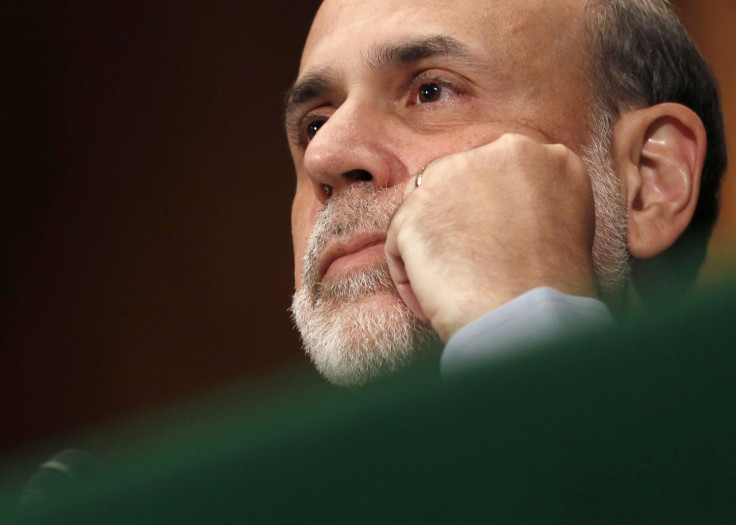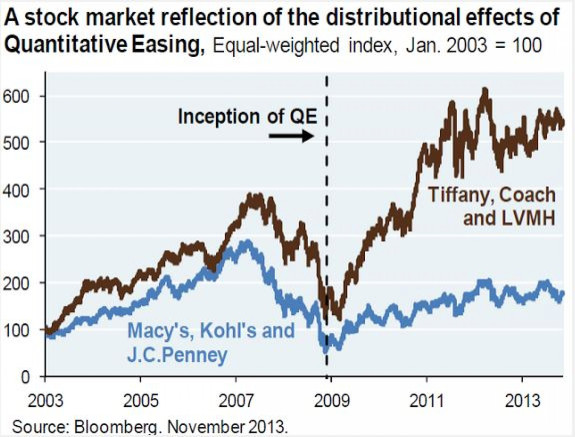Who Has Really Benefited From Five Years Of The Fed's Quantitative Easing?

Sunday marks the fifth anniversary of the Federal Reserve's launch of its quantitative easing program to bail out the financial system and stimulate growth. Naturally, people are asking who has really benefited from the bond-buying binge. The answer, according to an analysis by Credit Writedowns, is those who had the resources to hold on to stock investments. No one else was nearly as fortunate.
The total return on the S&P500 index, including dividends, has soared to 144 percent since 2008. Not bad.

Savers like retirees who held onto their assets as cash were hurt by near-zero interest rates that destroyed their returns. Even though inflation remained historically low during the last five years, it outpaced the meager returns cash provided and eroded fixed income investors' buying power.
Folks without savings or significant stock investments relied on house price appreciation or hoped for wage increases, largely in vain.
While housing recovery helped those who’ve kept their homes, U.S. housing prices rose less than 5 percent over the past 5 years, according to the S&P Case-Shiller Home Price Index.
Wage growth looks just as dim. After falling in 2009, private sector wages have hovered around the same rates.

To sum up QE’s effects, take a look at the chart below, which shows the average stock performances of luxury goods stores that attract the wealthy versus the average stock performances of retail stores that target the middle class.

© Copyright IBTimes 2024. All rights reserved.






















